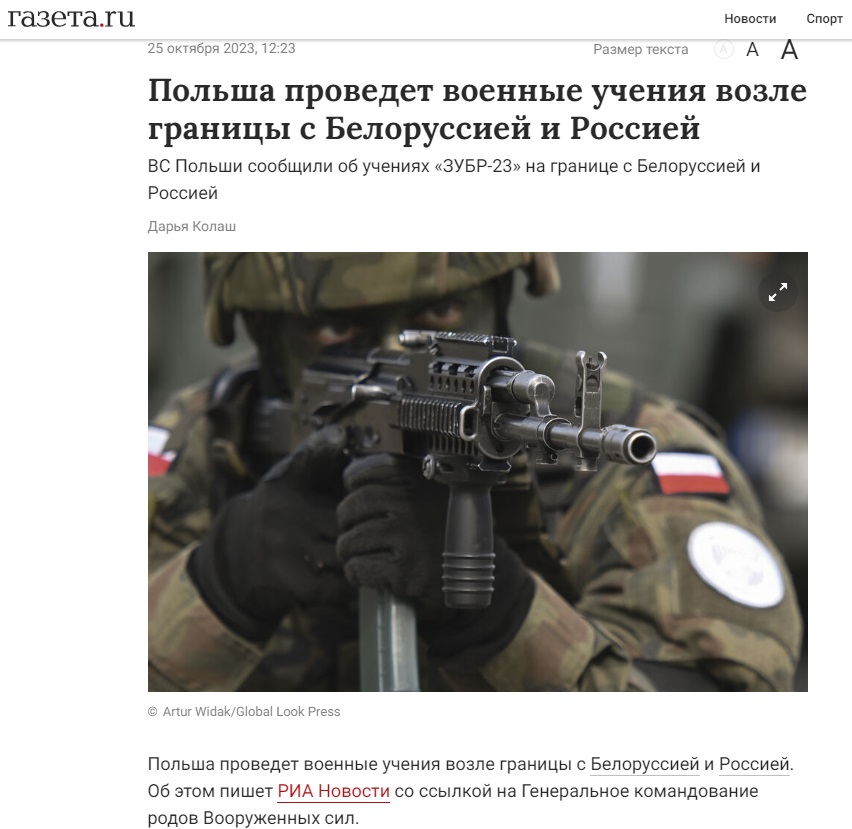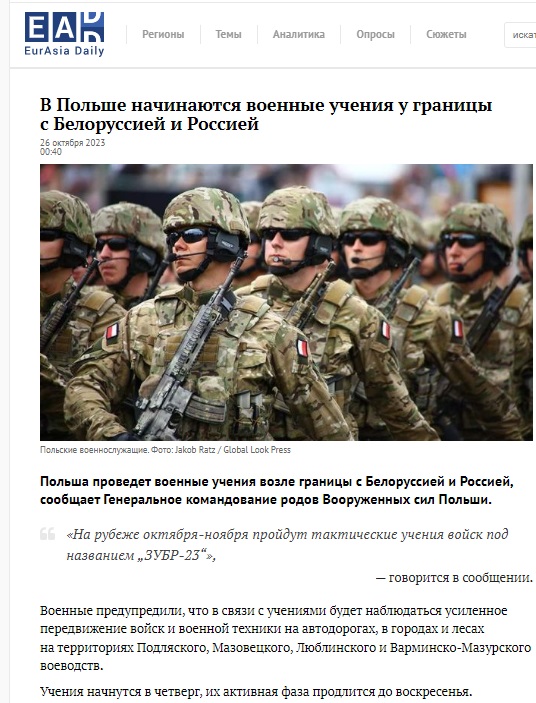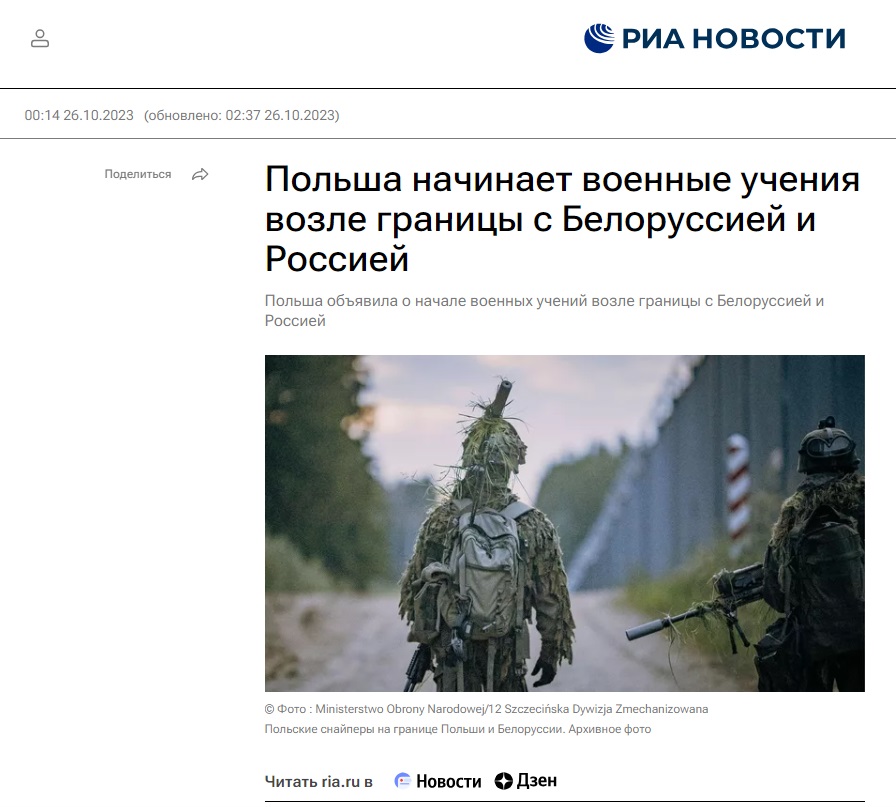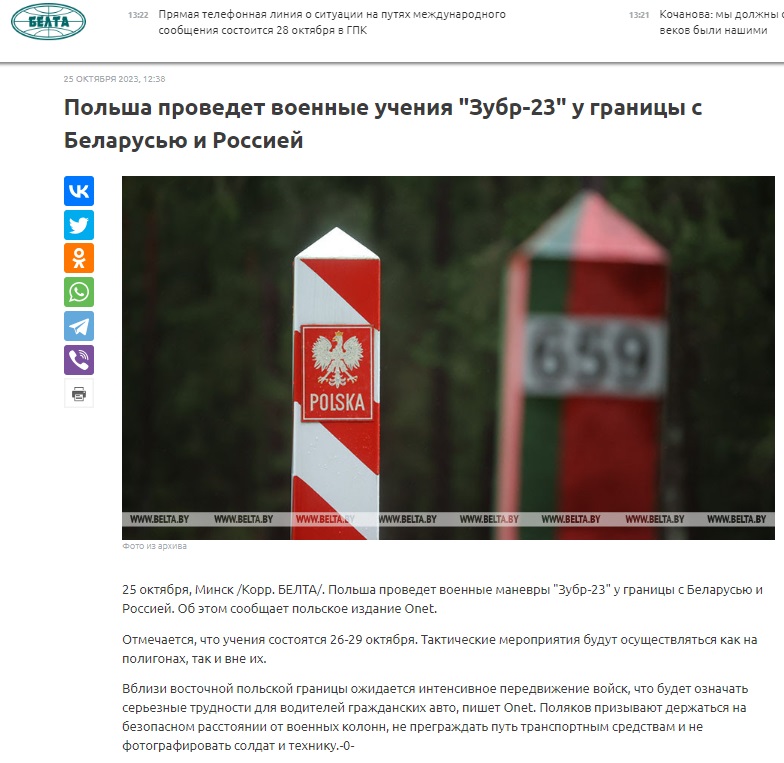As part of the ongoing disinformation campaign against Poland and NATO, the Russian side has returned to the narrative of portraying Poland as a “provocative” state on the border with Russia and Belarus. In this way, the Russians responded to the topic of the Polish Army starting the Żubr-23 exercises, which are taking place in the eastern part of the country. Russians and Belarusians have refreshed the narrative of a “militaristic Poland” through their materials, suggesting that Poland not only “generates tensions and crises” but also is preparing, together with NATO, to “attack its eastern neighbours”.
Minsk and Moscow have used the chosen approach (commenting on military manoeuvres and exercises) for an extensive period of time. Any NATO manoeuvres or exercises taking place on the territory of countries neighbouring Russia and Belarus are presented as a “provocation” or “unjustified escalation of tensions.” In the vision of reality created by the Russian and Belarusian side, it is NATO that forces the so-called “Union State” to react – to conduct similar exercises or to deploy troops to the western border. It is worth noting that Russians explain the causes of the war in Ukraine in the same way. Moscow and Minsk’s armed aggression (allowing the territory of the country to be used by Russian forces attacking Ukraine) is portrayed as a decision that Russia was “compelled” to make by the West’s “imperialistic ambitions” and “militaristic provocations”. The above-mentioned disinformation narrative (completely falsifying the causes of the war) justifies the Kremlin’s aggressive policy by placing the responsibility for starting the war on the West/NATO.
Narratives and communications depicting NATO and Poland as a “provocative” state towards Russia and Belarus (in the context of military manoeuvres) are used for internal and external objectives. On the one hand, it serves to strengthen the image of Belarus and Russia (the so-called Union State) as a “besieged fortress” (consolidating citizens and distracting them from pressing problems) and, on the other, it is used to cover up the truth about the aggressive nature of the Russian state (external direction).
It must be noted here that the actions of Russian and Belarusian disinformation centres in this context are consolidated and the message is consistent, building a contrast between the “evil, militaristic Poland/NATO” and Russia and Belarus – which are “defending peace and stability in Europe”.
In the context of the topic of a given analysis, we need to remind about the recommendation to refrain from photographing military transports. Making military equipment photos available online can present our opponent with valuable information from their point of view and can be exploited for propaganda and misinformation campaigns targeting our nation. It is important to keep in mind that, as a result of exercises (increased movement of military vehicles), disinformation messages about an alleged impending coup or “military troops being deployed on the streets” may once again appear in the Polish infosphere. It is advisable to approach such reports with caution, as they can be disseminated not only by anonymous sources.
Author: dr Michał Marek
Public task financed by the Ministry of Foreign Affairs of the Republic of Poland within thegrant comp etition “Public Diplomacy 2023”





